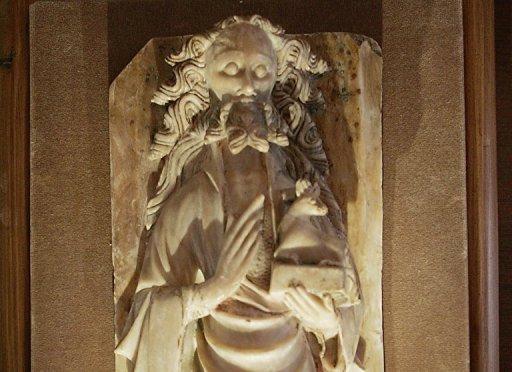Source - http://phys.org/news/2012-06-bones-bulgaria-john-baptist.html

An alabaster sculpture of John the Baptist is pictured in France. Scientists have found new evidence they say supports the theory that a knuckle bone and other human remains found under a church floor in Bulgaria may be of John the Baptist.
Scientists have found new evidence they say supports the theory that a knuckle bone and other human remains found under a church floor in Bulgaria may be of John the Baptist.
The relics found in a small marble sarcophagus two years ago on a Bulgarian island called Sveti Ivan, which translates as Saint John, also included a human tooth, part of a skull and three animal bones.
A research team from Oxford University dated the right-handed knuckle bone to the first century AD, when John is believed to have lived until his beheading ordered by king Herod, the university said in a statement.
And scientists from the University of Copenhagen analysed the DNA of the bones, finding they came from a single individual, probably a man, from a family in the modern-day Middle East, where John would have lived.
While these findings do not definitively prove anything, they also don't refute the theory first proffered by the Bulgarian archaeologists who found the remains while excavating under an ancient church on the island.
Many sites around the world claim to hold relics of the saint, including the Grand Mosque in Damascus which says it has his head.
The right hand with which the prophet allegedly baptised Jesus in the River Jordan is also claimed to be held by several entities, including a Serbian Orthodox monastery in Montenegro.
"The result from the metacarpal hand bone is clearly consistent with someone who lived in the early first century AD," Oxford University professor Tom Higham said of the new study.
"Whether that person is John the Baptist is a question that we cannot yet definitely answer and probably never will."
Bulgarian archaeologists had found a small box made of hardened volcanic ash close to the sarcophagus.
The box bore inscriptions in ancient Greek that referred to John the Baptist and the date that Christians celebrate his birth, June 24.
The findings of another Oxford researcher, using historical documents, suggest that the monastery of Sveti Ivan may have received a portion of John the Baptist's relics in the fifth or early sixth centuries.
The findings are to be presented in a documentary to be aired on The National Geographic channel in Britain on Sunday.
(c) 2012 AFP